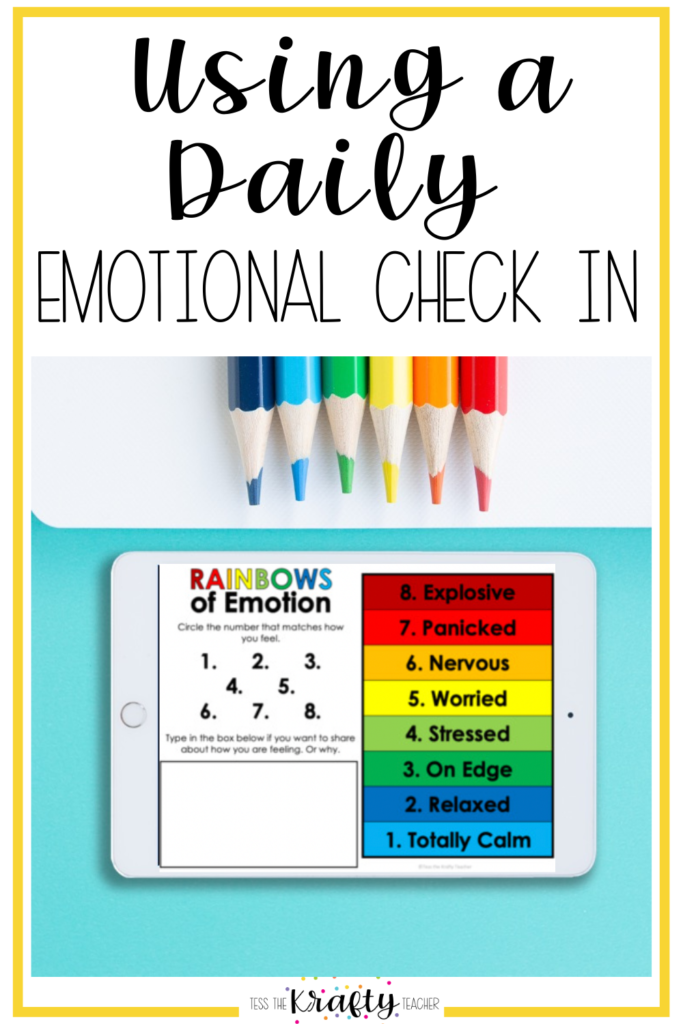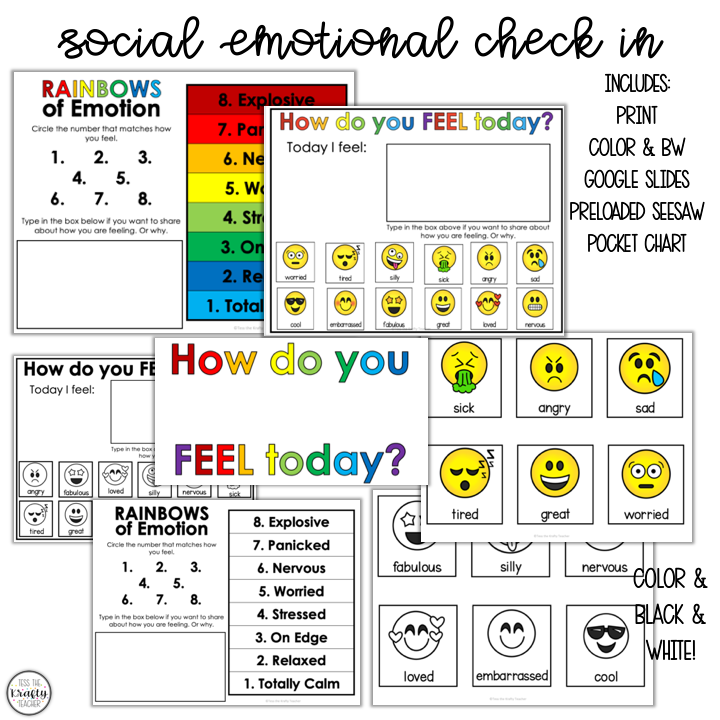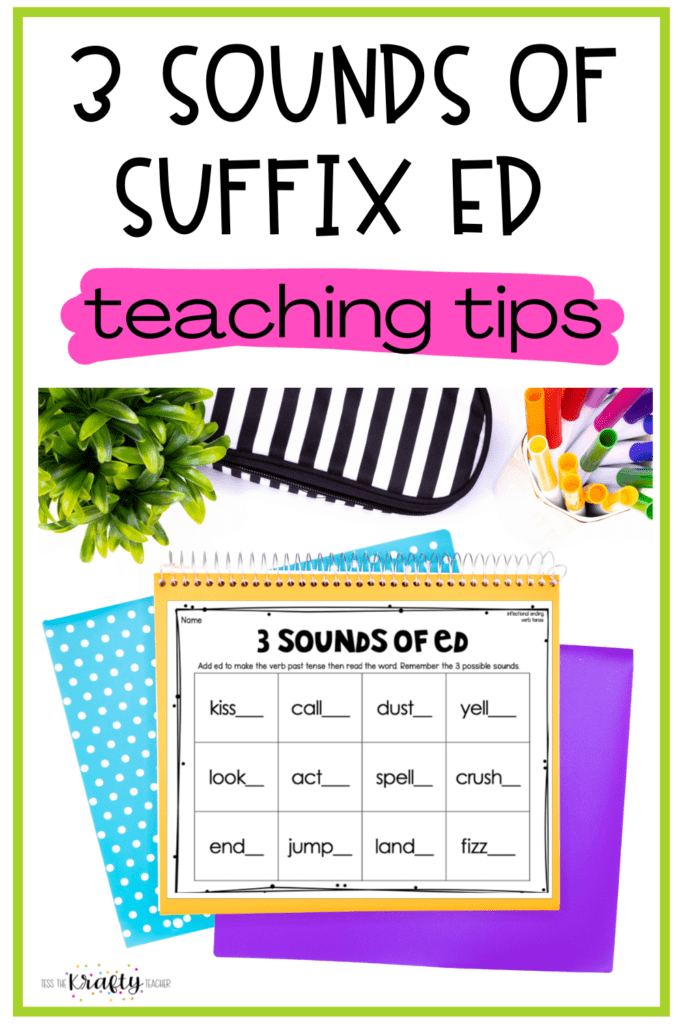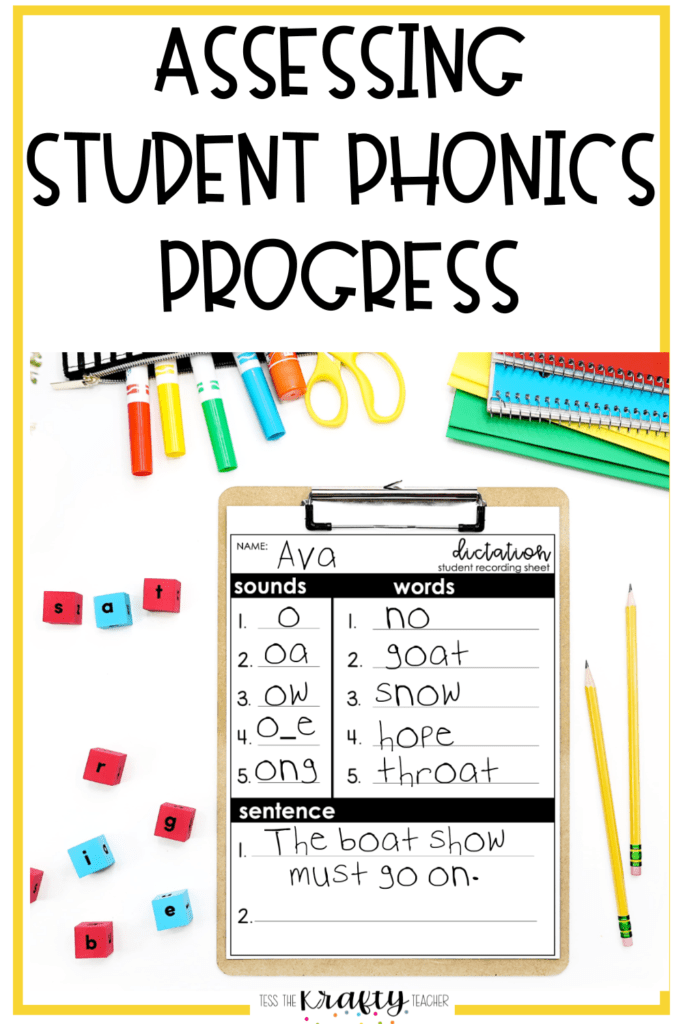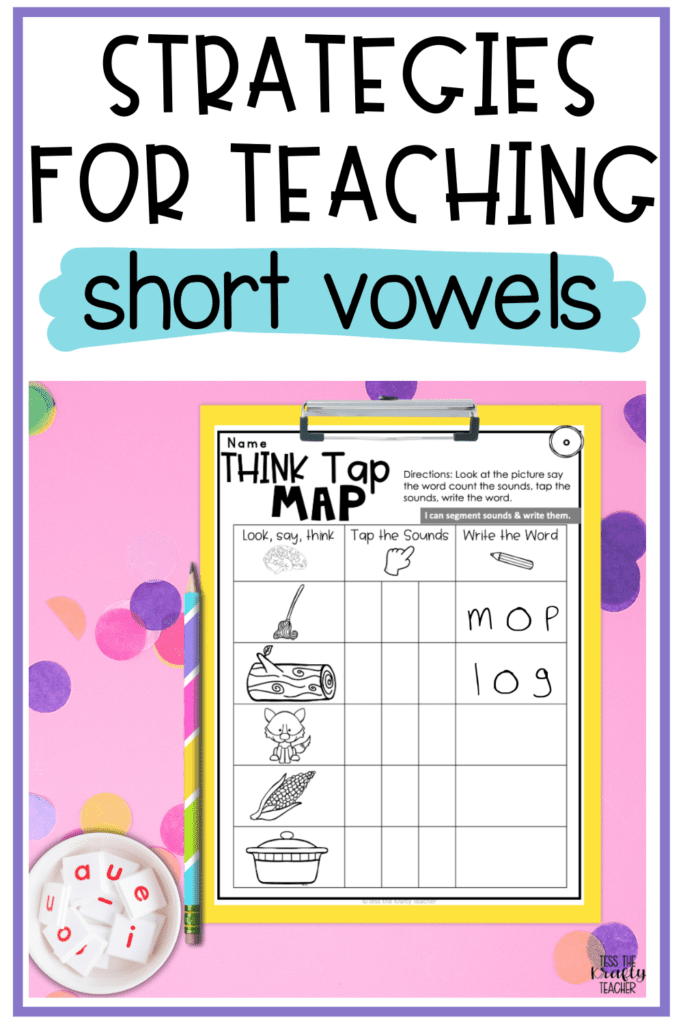By the end of the blog post you will know why it is important to use a daily student emotional check in sheet with your students.
Sometimes teachers immediately dive into a lesson and forget to do an emotional check-in with their students. This can lead to frustration for both the teacher and the students throughout the day since emotions affect a student’s behavior and willingness to learn.
Each child comes to the classroom with different emotions every day and it can affect how the day goes overall. You can’t change a child’s emotions but you can help them feel heard and loved by including emotional check-ins throughout your day.
I originally started using student emotional check ins while doing distance learning. These check-ins provided a new opportunity for me to connect with my students through a computer screen. They also allowed me some insight into how my students were doing at any given point and what additional support they may need.
As we’ve moved back to the classroom, I’ve brought the emotional check-ins with me. Students in the classroom can still benefit from someone asking about their emotions and giving them the chance to feel heard. Some may be hesitant at first but that’s where a simple feelings chart can help because they don’t have to explain anything to anyone. They simply have to share what they feel right now.
What is a student emotional check-in sheet?
An emotional check-in is an opportunity for everyone to share how they’re feeling in a non-threatening setting. I’ve created two different charts that can be used for an emotional check-in sheet. The first chart uses a rainbow visual for students to share how they’re feeling on a scale of 1 (calm) to 8 (explosive). This chart gives students the chance to look inward and analyze their emotions, a skill that can help with self-regulation.
The second chart I’ve created uses visual faces to describe the many emotions that a child might be feeling. This chart is helpful for younger kids that might not be able to read or understand the scale of the rainbow. The visual cues help students understand the emotional vocabulary words better.
Both of these charts also come in a digital version. With the digital version, students have the opportunity to write a quick response about their emotions and whether or not they would like to share more. This is a great way to open up the opportunity to talk about emotions without making it feel mandatory. Students get to choose whether or not they share more with the teacher or class.
Why should teachers use a student emotional check-in sheet?
There are several different reasons that a teacher might choose to include an emotional check-in into their daily routine. A check-in allows the teacher to quickly assess how everyone is doing. If there are students who seem to be working through some big emotions, you can make a note to speak with them in a private setting later. Emotions can also help you understand how a child might process the lesson of the day.
Emotional check-ins also help the students in the classroom by normalizing feelings and talking about them. Society and some families teach students to ignore their feelings or to keep them hidden from others. A daily check-in can help students understand that emotions are a normal part of life and that everyone struggles from time to time.
These check-ins provide students with an opportunity to learn how to recognize and talk about their emotions. It normalizes emotions and how they can impact our day. By giving every student the chance to check in, you are allowing them to see that their emotions are valid and valued. This can help with self-regulation and management.
When should you use an emotional check-in?
You can choose to include emotional check-ins throughout your day or you can use it once. I recommend using it as part of your morning routine. This gives everyone the chance to evaluate how they are starting the day. It also allows you time to personally check in with students that need it throughout the day.
In addition to using a morning check-in, you can also check in with your students at the end of the day or following a big transition. This can help you see how school and different aspects are affecting their emotions. Are they doing well at the end of the day or are they upset by something? Do emotions seem to change after special area or recess? These can be clues about what is affecting a student’s well-being.
It is really up to their teacher to evaluate their schedule and determine when emotional check-ins could be useful. In addition to regularly scheduled check-ins, you might choose to do random check-ins when the energy of the classroom is feeling off or strained.
How do you use an emotional check-in with your students?
It’s important to remember that an emotional check-in doesn’t have to be complicated or long. When you keep the check-in simple and a part of your normal routine, students will feel safe and know what to expect. This can help them check in better with their own emotions and those around them.
Students aren’t the only ones in the classroom with emotions. You can model the check-in by sharing a bit about your own emotions and why they are happening. Sharing your own emotions can help set the stage and foster a community of respect within the classroom.
As you plan and set up to include student emotional check-ins into your daily routine, please remember that some students will be hesitant to share their emotions. Students’ privacy should be respected and no one should feel required to share their emotions. Create a safe space and give them time to open up when they’re most comfortable.
Now that you have a daily emotional check in set up why not check out what you HAVE to do the first day of school.
PIN FOR LATER
